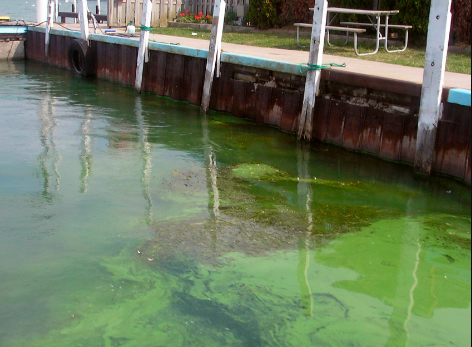Florida's Natural Enemy: Algae
Published on by Marcelo Moacyr in Academic
Septic tanks in densely populated areas are negatively affecting the water quality of lakes, rivers, estuaries and coasts.

Attached link
https://s3-us-west-2.amazonaws.com/aquadocument/Specifier_Reprint_-_Florida_s_natural_enemy-_Algae_1515706377.pdfMedia
Taxonomy
- Water Pollution
- Resource Management
- Water Resource Management
- Algae
- Pollution
- Pollution
6 Comments
-
Here is a related video. https://www.youtube.com/watch?v=rJm2E_me5bg
-
The algae photosynthetic process provides a real value proposition in both nutrient removal and oxygen production. It converts carbon dioxide into oxygen organically. This eliminates the need for mechanical aeration and denitrification in WWTP. The algae also provides a valuable biomas for biogas or biofuels or fertilizer products. We use vacuum collection in concert with algae photosynthetic technology to virtually eliminate the organic and nutrient pollutants and deliver a highly oxygenated tertiary re-use water stream and baseload renewable energy.
-
Hi All, this topic is critical, AND affects me personally as I have a home on Hutchinson Island on the Florida East Coast near the Indian River. In the 40 years since I have been going there is is very clear that this issue has developed and evolved to a critical state. It is a massive , multi-stakeholder challenge to solve. Stan Bronson can you enlighten us as to what Florida Earth Foundation is doing, and the University of Florida Water Program/ other statewide initiatives and let members know how they can get involved? Much appreciated!
-
Algae blooms are a direct response to excess phosphate. The excess can occur from a myriad of causes including runoff, accumulation of bottom sediment, leaching from septic systems, lawn fertilizer, phosphate laden detergents, etc. We developed the concept of The Water Trifecta™ about 10 years ago to describe a systematic way to clean up ponds and lakes. The three parts of the trifecta are 1) ultrasound to stop blooms before they get started, 2) aeration to break up thermoclines and promote aerobic bacterial digestion as opposed to anaerobic digestion that releases phosphates, and 3) addition of beneficial bacteria that can absorb phosphates internally as poly-phosphates and thus remove them from the water column. george@algaecontrol.us
-
Algae is not the problem it is a natural response to the pollution we are creating. Onsite technology works ok in rural communities, dense population areas with high groundwater or coastal communities simply need to sewer. Much of what we do is done because that is the way it was always done rather than whether it is the best way. The presumption was only sewer where absolutely necessary. We have ended up with areas utilizing onsite systems that should have been sewered because no one realized that the nutrients or the microconstituents were a problem. The process needs to be streamlined and accelerated not delayed, mother nature is telling us this with the algae blooms. Killing the messenger is not going to make the problem go away. Instead we need to change the view of wastewater from something to get rid of into something of value. This is the premise of the "Utility of the Future" transition of the entire industry. Algae is also a major player in natural ecosystems responses in both aquatic and atmospheric pollution. By recognizing the potential off the algae we can completely change the entire dialog. If you are not fpcused upon your wastewater
1 Comment reply
-
computer screen froze, If you are not focused on your wastewater as a renewable resource opportunity you are throwing the baby out with the bathwater. See www.aquagen-isi.com
-
-
Septic tanks are dinosaures and should be illegal. Aerated home treatment systems and sprinklers are not much better; the average homeowner is not capable or knowledgable to maintain them, and the "treatment" is suspect. Bossier Parish (think county), Louisiana, is in the process of developing the first parish wide collection and sewerge treatment system in this State. It has not been easy, or cheap, to do; the hardest part was actually getting started. Then getting through the first few years where you can't break even because of all of the debtand required set-aside funds that are required inorder to secure even low interest loans. But, with a little common sense approach at getting by until you get over the financial hump, it can be done! We are the proof.